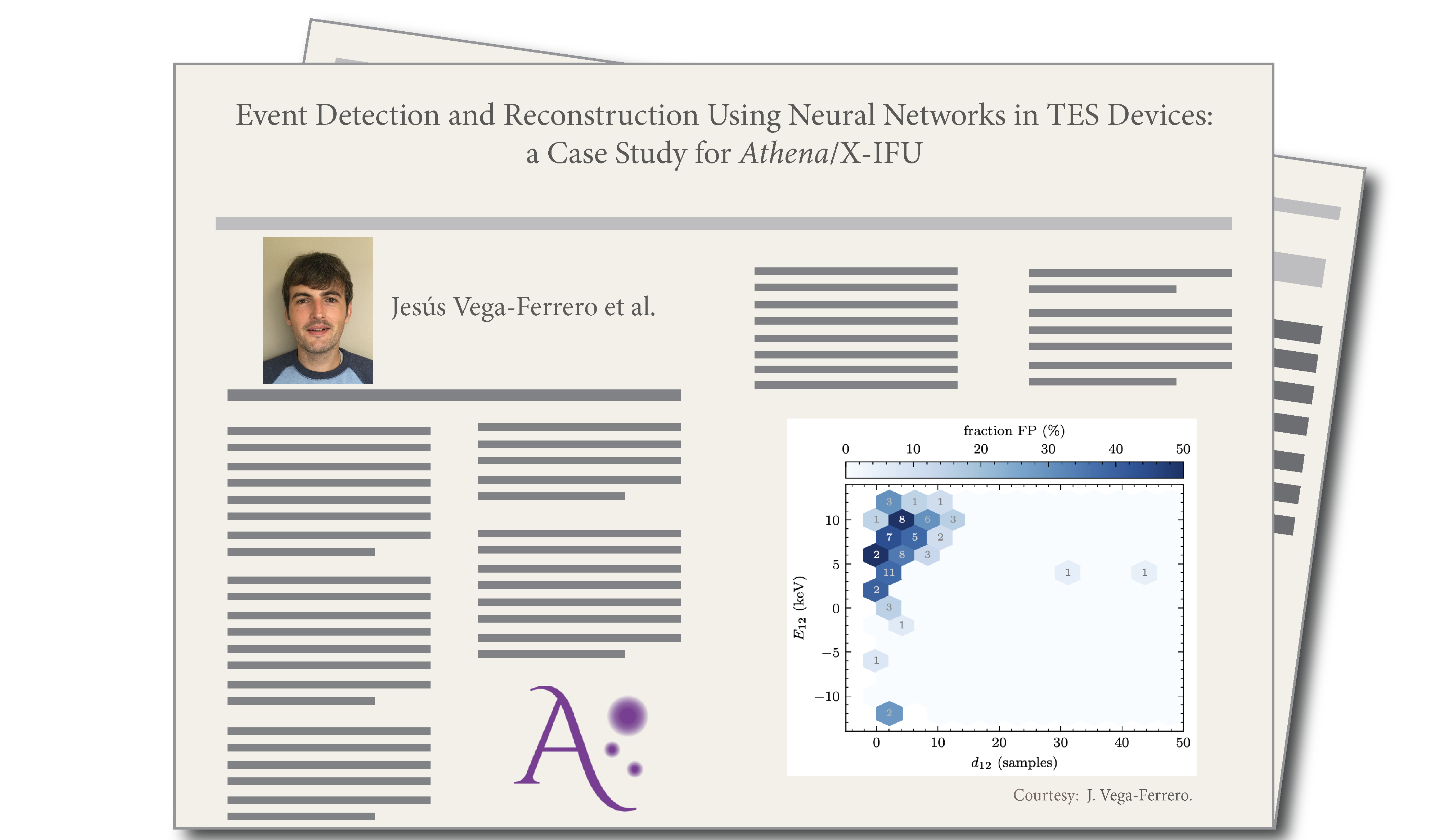
Event Detection and Reconstruction Using Neural Networks

By Jesús Vega-Ferrero
Transition Edge Sensors detector devices, like the core of the X-IFU instrument that will be on-board the Athena X-ray Observatory, produce current pulses as a response to the incident X-ray photons. The reconstruction of these pulses has been traditionally performed by means of a triggering algorithm based on the derivative signal overcoming a threshold (detection) followed by optimal filtering (to retrieve the energy of each event). However, when the arrival of the photons is very close in time, the triggering algorithm is incapable of detecting all the individual pulses which are thus piled-up.
To improve the efficiency of the detection and energy-retrieval process, we present an alternative approach based on Machine Learning techniques to process the pulses. For this purpose, we construct and train a series of Neural Networks (NNs) not only for the detection but also for the recovery of the arrival time and the energy of simulated X-ray pulses. The data set used to train the NNs consists of simulations performed with the SIXTE/XIFUSIM software package, the Athena/X-IFU official simulator.
The performance of our NN classification clearly surpasses the detection performance of the classical triggering approach for the full range of photon energy combinations, showing excellent metrics and very competitive computing efficiency. As shown in the plot of the figure, our models are able to correctly classify single (S) and double (D) pulse records, only failing in extreme cases where the arrival time between the first and the second pulses (denoted as d 12 ) are below ~10 samples, and not for all of them (~50% of the cases at maximum). For comparison, previous methods were sensitive only to D records with differences in the arrival times larger than d 12 > 30-45 samples (0.2-0.3 ms for the X-IFU baseline pixels, given the assumed sampling rate of 156.25 kHz). Overall, the misclassifications (also labelled as FS) occur only for 1% of the records in a test sample consisting of 5 000 records of each class (i.e. S and D records).

